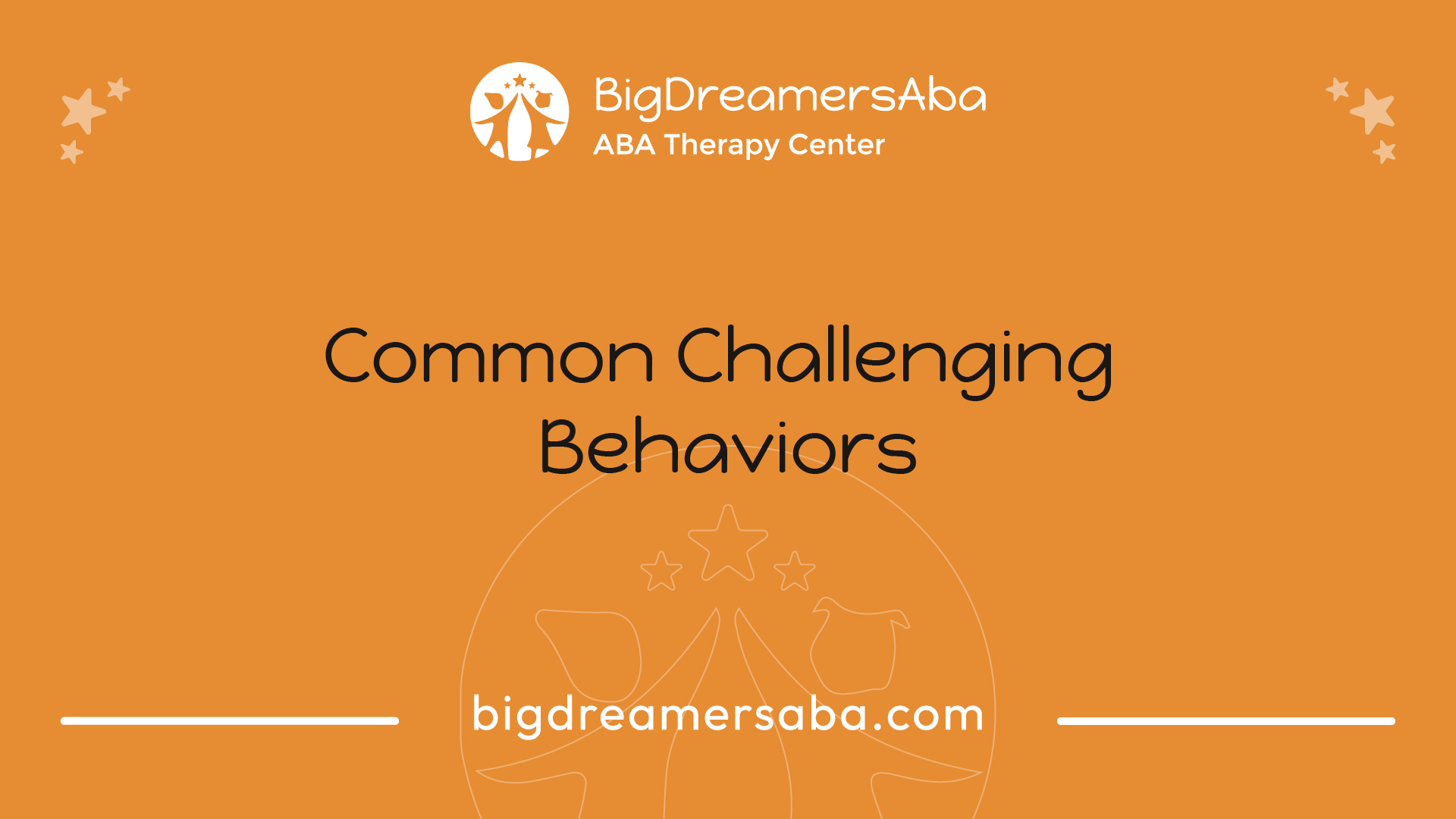Challenging Autism Behavior Problems
Manage challenging autism behavior problems with effective strategies and support for caregivers. Discover solutions now!

Understanding Challenging Behavior
When it comes to understanding challenging behavior in individuals with autism, it is important to consider the root causes that contribute to these behaviors. Challenging behaviors can have both biological and social origins, or a combination of both.
Biological causes of challenging behavior can include factors such as anxiety, painful medical comorbidities, and environmental sensory processing issues [1]. Anxiety, for example, is prevalent in 40% to 80% of the autism spectrum disorder (ASD) population and has been associated with challenging behaviors such as aggression, self-injurious behavior (SIB), and tantrumming. Anxiety can act as an antecedent or a setting event for challenging behaviors in individuals with ASD.
Painful medical comorbidities also play a role in challenging behaviors. Allergies, constipation, sleep disturbances, and other medical conditions frequently co-occur with challenging behaviors in individuals with ASD. These comorbidities can contribute to increased stress, discomfort, and frustration, potentially leading to challenging behaviors.
Environmental sensory processing issues can also contribute to challenging behaviors. Individuals with autism may experience sensory overload or have difficulty processing sensory information from their environment. This can lead to heightened anxiety, irritability, and difficulty regulating emotions, which may manifest as challenging behaviors [1].
In addition to biological factors, challenging behaviors can also have social causes. These can include a desire for attention, attempts to avoid or acquire certain objects or situations, or challenges with communication and social interaction [1]. Understanding the specific root causes of challenging behaviors is essential for effective intervention and support.
By recognizing the underlying factors contributing to challenging behaviors in individuals with autism, caregivers, educators, and professionals can develop targeted strategies and interventions to address these behaviors. It is important to approach challenging behaviors with empathy, understanding, and a willingness to explore the unique needs and experiences of individuals with autism.

Common Challenging Behaviors
Individuals with autism may display challenging behaviors that can pose difficulties for both themselves and their caregivers. Understanding these behaviors is crucial in order to address them effectively. Two of the most common challenging behaviors in individuals with autism are aggression and self-injury, as well as tantrums and noncompliance.

Aggression and Self-Injury
Aggression and self-injury are challenging behaviors that can occur in individuals with autism. According to the Autism Research Institute, approximately 59% of individuals with autism engage in self-injury, aggression, and/or destructiveness at some point in their lifetime [1]. These behaviors can manifest in various ways, such as hitting, biting, scratching, head-banging, or pinching.
Aggression and self-injury often serve as a form of communication for individuals with autism, as they may struggle to express their needs or emotions verbally. These behaviors can also be triggered by sensory overload or difficulties in regulating emotions. It is important to remember that these behaviors are not intentional acts of malice, but rather a means of expressing distress or seeking sensory relief.
Addressing aggression and self-injury requires a comprehensive approach that focuses on identifying the underlying causes and implementing appropriate strategies. This may involve conducting a functional behavior analysis (FBA) to understand the antecedents and consequences of these behaviors. Based on the findings of the FBA, interventions can be developed, such as implementing positive reinforcement strategies and teaching replacement behaviors [3]. Seeking the guidance of a professional, such as a behavior analyst or therapist, can provide valuable support in managing these challenging behaviors.

Tantrums and Noncompliance
Tantrums and noncompliance are also common challenging behaviors observed in individuals with autism. Tantrums can involve crying, screaming, kicking, or throwing objects, and they typically occur when the individual is unable to communicate their needs or frustrations effectively. Noncompliance refers to a refusal to follow instructions or engage in desired activities.
These behaviors can stem from difficulties in communication, social interaction, or sensory processing. Individuals with autism may struggle to understand and express their emotions, leading to frustration and meltdowns. Sensory overload, such as being overwhelmed by loud noises or bright lights, can also contribute to these behaviors.
To address tantrums and noncompliance, it is important to focus on proactive strategies that promote positive behaviors and teach alternative coping skills. Applied Behavior Analysis (ABA) therapy, which is based on the principles of behavior analysis, can be an effective approach. ABA therapy emphasizes reinforcing desired behaviors and teaching individuals new skills, while also addressing the underlying causes of challenging behaviors.
Additionally, creating a structured and predictable environment, providing visual supports, and using communication tools like the Picture Exchange Communication System (PECS) can help individuals with autism better understand and express their needs, reducing the occurrence of tantrums and noncompliance [4].
Understanding these common challenging behaviors and implementing appropriate strategies can greatly improve the quality of life for individuals with autism and their caregivers. By addressing the root causes, providing support, and utilizing evidence-based interventions, it is possible to manage and reduce these challenging behaviors effectively.
Strategies for Managing Challenging Behavior
When it comes to managing challenging behavior in individuals with autism, there are effective strategies that can help address these issues. Two commonly utilized approaches are Functional Behavior Analysis (FBA) and Applied Behavior Analysis (ABA) therapy.
Functional Behavior Analysis (FBA)
Functional Behavior Analysis (FBA) is a standard assessment strategy used to discover the underlying causes of challenging behaviors in individuals with autism. This assessment helps professionals understand the function or purpose that these behaviors serve for the individual. By identifying the triggers and maintaining factors of the challenging behavior, FBA guides the development of appropriate intervention strategies [1].
During an FBA, professionals observe and collect data on the challenging behavior in various settings and situations. They analyze the antecedents (triggers), behavior itself, and consequences to determine patterns and potential functions of the behavior. This assessment is crucial for designing effective intervention plans that address the root causes of the challenging behavior.
Applied Behavior Analysis (ABA) Therapy
Applied Behavior Analysis (ABA) therapy is a widely recognized and evidence-based approach for managing challenging behaviors in individuals with autism. ABA therapy focuses on teaching new skills, reducing triggers, and reinforcing positive behaviors [3]. It is a comprehensive treatment approach that can be tailored to the specific needs of each individual.
ABA therapy involves breaking down desired behaviors into smaller, manageable steps and using systematic techniques to teach these skills. It utilizes positive reinforcement, such as rewards and praise, to encourage the repetition of appropriate behaviors. Additionally, ABA therapy may involve strategies like prompting, shaping, and fading to guide individuals toward desired behaviors.
The goal of ABA therapy is to improve the individual's quality of life by enhancing their communication, social, and adaptive skills. It also aims to reduce challenging behaviors by teaching alternative strategies for expressing needs and managing frustrations. ABA therapy can be delivered in various settings, including home, school, or clinical settings, and is typically delivered by qualified professionals.
By combining the insights gained from Functional Behavior Analysis (FBA) with the practical techniques of Applied Behavior Analysis (ABA) therapy, individuals with autism and their caregivers can develop effective intervention plans to manage challenging behaviors. These approaches focus on understanding the underlying causes of the behavior and teaching new skills, ultimately promoting positive behavior change and improving the overall well-being of individuals with autism. For more information on positive behavior support, refer to our article on positive behavior support in autism.
Addressing Sensory Challenges
For individuals with autism spectrum disorders (ASD), sensory challenges play a significant role in their behavior and daily functioning. Over 96% of kids with ASD have unusual sensitivities to things like touch, sound, and sights [4]. These sensitivities can manifest as either hyperresponsiveness (overreacting to sensory input) or hyporesponsiveness (underreacting to sensory input). Recognizing and addressing these sensory issues is crucial for better supporting individuals with autism.
Sensory Processing Issues
People with autism often have sensory processing challenges, which can significantly impact their behavior and overall well-being. Sensory processing issues refer to difficulties in receiving, interpreting, and responding to sensory information from the environment. This can include tactile sensitivity (sensitivity to touch or textures), auditory sensitivity (sensitivity to sounds), visual sensitivity (sensitivity to light or visual stimuli), and other sensory modalities [4].
Understanding the specific sensory processing issues that an individual with autism faces is essential for developing effective strategies to address their challenging behavior. For example, if a child is hypersensitive to touch, they may become distressed or exhibit avoidance behavior when touched or when encountering certain textures. On the other hand, if a child is hyposensitive to auditory stimuli, they may not respond to loud sounds or may seek out loud noises for sensory input.
Sensory Overload Triggers
Sensory overload occurs when an individual with autism becomes overwhelmed with sensory input, leading to behavioral challenges. Triggers for sensory overload can vary from person to person, but common triggers include loud noises, bright lights, strong smells, crowded spaces, and certain textures or tastes [3]. When individuals experience sensory overload, they may exhibit behaviors such as meltdowns, withdrawal, aggression, or self-stimulation (e.g., rocking or hand-flapping).
Identifying and managing sensory overload triggers is crucial for helping individuals with autism navigate their environment more comfortably. Strategies may include creating a sensory-friendly environment by reducing sensory stimuli, providing visual supports (such as visual schedules or social stories), and offering breaks in a quiet and calm space. By minimizing sensory overload and providing appropriate supports, individuals with autism can better regulate their behavior and cope with challenging situations.
Understanding and addressing sensory challenges is a vital aspect of managing challenging behavior in individuals with autism. By recognizing sensory processing issues and identifying sensory overload triggers, caregivers and professionals can develop tailored strategies to support individuals in their daily lives. Additionally, interventions like applied behavior analysis (ABA) therapy can help individuals with autism develop skills to cope with sensory challenges and improve their overall well-being.
Effective Intervention Approaches
Addressing challenging behavior in individuals with autism requires effective intervention approaches that focus on teaching new skills, reducing triggers, and reinforcing positive behaviors. Two commonly used strategies are positive reinforcement and replacement and response techniques.
Positive Reinforcement Strategies
Positive reinforcement is a key strategy in managing challenging behavior in individuals with autism. This approach involves providing immediate rewards or incentives when appropriate behavior is displayed. By reinforcing positive behaviors, individuals with autism are more likely to repeat those behaviors in the future.
When implementing positive reinforcement strategies, it is important to identify the specific behaviors that you want to encourage and define clear, achievable goals. Rewards can vary depending on the individual's preferences and interests, such as verbal praise, tokens, access to preferred activities, or small tangible rewards. The key is to select reinforcers that are meaningful and motivating to the individual. It's important to note that what may be reinforcing for one person with autism may not be for another, so individualized approaches are crucial.
To effectively use positive reinforcement, it is essential to provide immediate feedback and reinforcement when the desired behavior occurs. Consistency and continuity are key in ensuring that the reinforcement is associated with the specific behavior being targeted. By consistently reinforcing positive behaviors, individuals with autism can learn and develop new skills while reducing challenging behaviors.
Replacement and Response Techniques
In addition to positive reinforcement, replacement and response techniques are important in managing challenging behavior in individuals with autism. These techniques aim to identify the specific causes or triggers of challenging behaviors and teach appropriate replacement behaviors.
Replacement strategies focus on teaching alternative behaviors that serve the same function as the challenging behavior. For example, if a child engages in aggression when they are frustrated, teaching them appropriate ways to communicate their feelings, such as using words or gestures, can be an effective replacement strategy. Functional communication training, coping skills, tolerance for delay of reinforcement, and daily living skills are common replacement strategies used in addressing challenging behaviors in individuals with autism.
Response techniques also play a crucial role in managing challenging behavior. Extinction, which involves withholding reinforcement for problem behaviors, is one response technique used to reduce or eliminate unwanted behaviors. By ignoring problem behaviors and not providing the reinforcement that may be reinforcing those behaviors, individuals with autism can learn that the challenging behavior does not lead to the desired outcome. It's important to note that extinction should only be used under the guidance of professionals, as it requires careful implementation to ensure safety and effectiveness.
When implementing replacement and response techniques, it is essential to work closely with professionals who specialize in autism behavior management, such as behavior analysts or therapists. These professionals can provide guidance, develop individualized behavior plans, and monitor progress over time.
By implementing positive reinforcement strategies and using replacement and response techniques, individuals with autism can learn new skills, reduce challenging behaviors, and improve their overall quality of life. It's important to remember that each individual is unique, and intervention approaches should be tailored to their specific needs and strengths.
Supporting Caregivers
Caring for individuals with autism and managing challenging behavior can be demanding and stressful. It is crucial for parents and caregivers to prioritize their own well-being to provide the best care for their loved ones. This section will explore the importance of self-care and stress management, as well as the benefits of seeking professional help when needed.
Self-Care and Stress Management
Parents and caregivers of children with autism should prioritize self-care and stress management to avoid burnout and provide high-quality care. Taking care of oneself physically, mentally, and emotionally is essential for maintaining the energy and resilience needed to navigate the challenges that come with managing challenging behaviors.
Engaging in self-care activities can benefit both the caregiver and the child with autism. By allocating time for activities that bring joy and relaxation, caregivers can recharge and reduce stress levels. This can include hobbies, exercise, meditation, spending time with supportive friends or family members, or seeking professional counseling to address emotional well-being.
Additionally, establishing a support network is crucial. Seeking support from trusted individuals, such as partners, friends, healthcare professionals, or psychologists, can provide a valuable outlet for sharing experiences, seeking advice, and gaining perspective. Connecting with other parents or caregivers who are going through similar challenges can also be incredibly beneficial.
Seeking Professional Help
Despite caregivers' best efforts, there may be instances where challenging behavior persists or becomes overwhelming. In such cases, seeking professional help from a pediatrician or psychologist is recommended. These professionals can provide guidance, evaluate the situation, and offer evidence-based strategies tailored to the specific needs of the child with autism and their family.
Professional help is particularly valuable when parents or caregivers have exhausted various strategies and remain concerned about the challenging behavior of an autistic child. Pediatricians and psychologists specializing in autism can conduct a comprehensive assessment, identify underlying factors contributing to the behavior, and recommend effective interventions.
Remember, seeking professional help is not a sign of weakness but rather a proactive step towards addressing challenging behaviors and ensuring the well-being of both the child with autism and their caregivers.
By prioritizing self-care and stress management, caregivers can better support their loved ones with autism. Remember to engage in activities that bring joy and relaxation, establish a support network, and seek professional help when needed. Together, these efforts can create a more balanced and nurturing environment for both the caregiver and the child with autism.
References
[2]:
[3]:
[4]:
Recent articles
.jpg)
Autism Services for Kids in Maryland

In-Home Support Services for Autism
